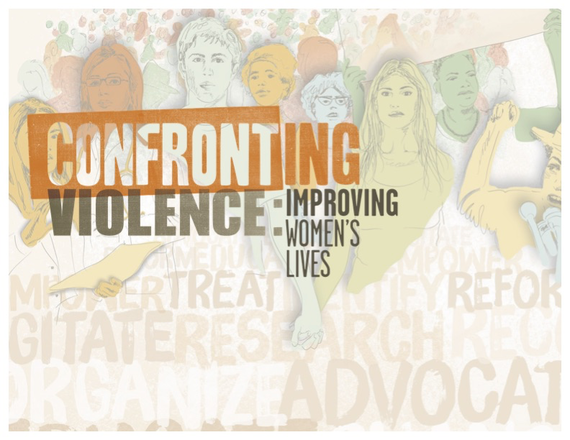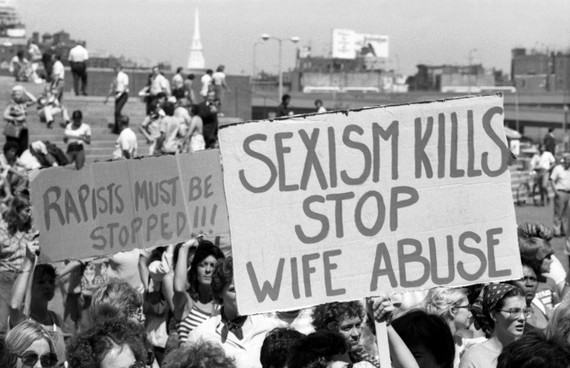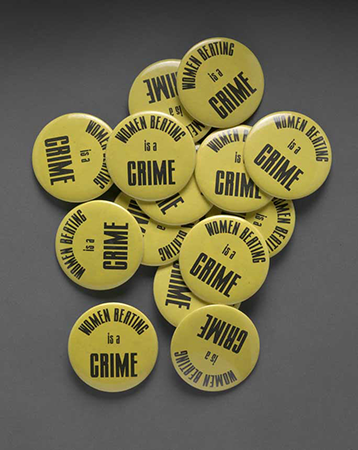It recently occurred to me that living in a world of Law & Order SVU has inadvertently enabled us to take huge accomplishments in confronting the continuing issue of domestic violence for granted.
If you are like me, you may, on occasion, get sucked into the SVU marathons popular on USA. You know the formula: Back-to-back episodes; at the beginning, someone is assaulted (often at the infamous "Hudson University"). The doctors, nurses and cops are all over it. Stabler and Benson to the rescue. Hour after hour, confirmation of what obviously has been the case for victims of assault or domestic violence since practically the beginning of time.
I remember in one particular episode, Benson was camping out in a victim's home, waiting to catch the abusive husband in the act. After a few hours of viewing this show, it may be unbelievable to you that victims were ever addressed any other way. While real life doesn't exactly mirror the SVU patented formula, the way victims of suspected domestic violence abuse are treated these days is a seismic shift from the way victims were engaged just a few decades ago.
I compare this revelation to learning about civil rights as a child in school. At first, I found it impossible to believe America was ever a place where the things I heard about were experienced. But within the revelation also came an understanding that there were heroes of the movement to attribute accomplishments. Say the name Martin Luther King, Jr., or Rosa Parks and it's evident to whom we owe a debt. But who are our heroes in the domestic violence movement?
As I first shared on Huffington Post, I am a survivor of domestic violence. Though it pains me to admit it, during my ER experience I was extremely resentful of a nurse I felt was overly pushy and insistent on treating me like a "victim."
I wrote about how I felt at the time: She was concerned; I was dismissive. I found myself laughing off my clumsiness and trying to engage in general conversation so that she could see I was in good spirits and stop giving me 'that look'. But this nurse, well, she wouldn't stop 'that look' and then she wouldn't stop with the questions.
Now I understand that nurse's approach was part of a larger coordinated effort, close to 40 years in the making. An effort that, in all honesty, probably saved my life.
Little did I know that another nurse had written in a professional journal years before that her "rule of thumb, learned after many years of working with battered women, is to suspect nearly any woman with trauma of having been battered, unless there's incontrovertible evidence to the contrary."
This history is now part of a fascinating exhibit at the National Library of Medicine titled "Confronting Violence: Improving Women's Lives."
It tells how nurse reformers were working on the front lines in shelters and emergency rooms across the country starting in the 1970s. They conducted studies, analyzed data and developed protocols for identification and treatment of patients who had experienced domestic violence. The exhibit also describes the continuing work in the field as new needs are addressed, such as girls and teens who are at risk for relationship violence
Before the 1970s, medicine just really ignored the whole issue. One survivor recalls that her doctor gave her "little pills to relax me and told to take things a little easier. I was just too nervous... I did go to two more doctors. One asked me what I had done to provoke my husband. The other asked if we had made up yet." Her story was repeated over and over.
This was apparently the prevailing attitude, as explained by a doctor at the time: "We don't have the time or the inclination to go into sociological background as for the reason of the assault...it's a personal problem between a man and wife."
The exhibit explains how emergency department nurses at Brigham and Women's Hospital in Boston in 1977 were the first in the nation to initiate and implement a protocol for the identification and treatment of women who were battered.
The nurses were trained on how to use techniques of crisis intervention and offer counseling services. In the first three years of service, the program identified over 200 battered women at the Boston hospital.
From there, the movement gained ground, including the creation of The Nursing Network on Violence Against Women, an organization founded "to encourage the development of an informed nursing practice on the range of health issues relating to violence against women."
Fast forward to my encounter, there was that nurse. Due to the courageous and determined actions taken by nurses in the past, that nurse had a protocol to follow. And what she saw in me that terrible night likely reinforced her commitment to the need for that protocol.



